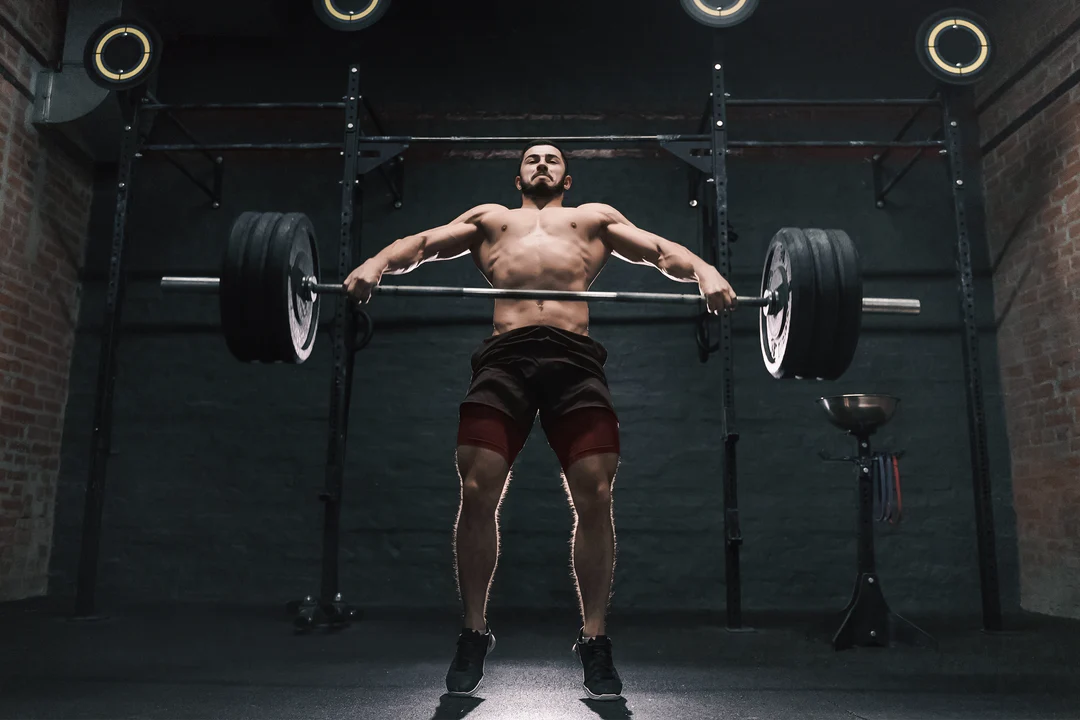
Olympic Lifts: What are they and should you be doing them?
Olympic lifts are a type of weightlifting that require explosive power, speed, and coordination to execute properly. These lifts are a staple in many strength and conditioning programs, and for good reason. They have been shown to be highly effective at developing strength, power, and athleticism. We will be looking at and discussing six main Olympic lifts and when and how to use them. These six are the squat snatch and power snatch, the clean and jerk, hang clean, power clean and push press.
Squat Snatch:
The squat snatch is a complex lift that involves lifting a barbell from the ground to overhead in one fluid motion. This lift requires a great deal of strength, speed, and flexibility, as well as precise technique. It is often used by athletes who require explosive power and speed, such as Olympic weightlifters, sprinters, and jumpers.
Power Snatch:
The power snatch is like the squat snatch, but instead of catching the bar in a deep squat, the lifter catches the bar at or above parallel, with a slight bend in the knees. This variation is often used by athletes who have mobility limitations that prevent them from performing the full squat snatch, or by those who want to focus on developing explosive power and speed from above parallel. Think of a rugby player cleaning out the ruck.
Clean and Jerk:
The clean and jerk is another complex lift that involves lifting a barbell from the ground to overhead, but in two separate movements. The lifter first cleans the barbell, bringing it to the shoulders, and then performs a “jerk”, driving the barbell overhead. The jerk is performed by driving power through the legs, into the shoulder and forcing the bar overhead while landing in a split stance. This lift is highly effective at developing full-body power, strength, and athleticism.
Hang Clean:
The hang clean is a variation of the clean & jerk, in which the lifter starts with the barbell already at the waist or slightly lower, instead of starting from the ground. In the hang clean there is no “jerk” motion, and the lift is completed when the bar comes to rest on the shoulders. This lift is often used to develop explosive power and strength in the hips and legs, and is particularly useful for athletes who need to generate power from a static position, such as rugby players and netball players.
Power Clean:
The power clean is similar to the hang clean, but instead of starting from a static position, the lifter starts from the ground. This variation is often used by athletes who want to focus on developing explosive power and speed, as well as by those who have mobility limitations that prevent them from performing the full clean and jerk.
Push Press:
The push press is a lift in which the lifter presses a barbell overhead using a slight dip and drive of the legs. This lift is highly effective at developing upper body strength and power, particularly in the shoulders, triceps, and upper back. This lift uses a similar “jerk” motion, but instead of landing in a split stance the goal of a push press is to utilise the shoulders to move the weight, while trying to land in the same stance that you started in.
When to Use Olympic Lifts:
Olympic lifts are highly effective at developing full-body strength, power, and athleticism, but they are also very technical and require a great deal of skill to perform properly. As such, they should only be used by those who have received proper instruction and coaching.
Olympic lifts are particularly useful for athletes who require explosive power and speed, such as sprinters, runners, rugby players and Olympic weightlifters. They are also useful for athletes who need to develop strength and power in a specific movement pattern, like rugby players looking to develop more leg drive from a static position.
It is important to note that Olympic lifts should not be used as a standalone training method. They should be integrated into a well-rounded strength and conditioning program that includes other lifts and exercises that address a variety of muscle groups and movement patterns.
If you want to learn more about fitness, nutrition and everything gym take a look at our blog here and give us a follow on Instagram and Facebook!!
References:
Channell, B; Barfield, J (2008). Effect of Olympic and Traditional Resistance Training on Vertical Jump Improvement in High School Boys. Journal of Strength and Conditioning Research 22(5): p 1522-1527
Mcbride, J. M.; Triplett-mcbride, T; Davie, A; Newtn, R. U. (1999) A Comparison of Strength and Power Characteristics Between Power Lifters, Olympic Lifters, and Sprinters. Journal of Strength and Conditioning Research 13(1):p 58-66
https://www.smai.com.au/blogs/news/6-power-lifting-movements
https://www.menshealth.com/fitness/a25350394/olympic-lifts-for-beginners/
setforset.com/blogs/news/olympic-lifts
